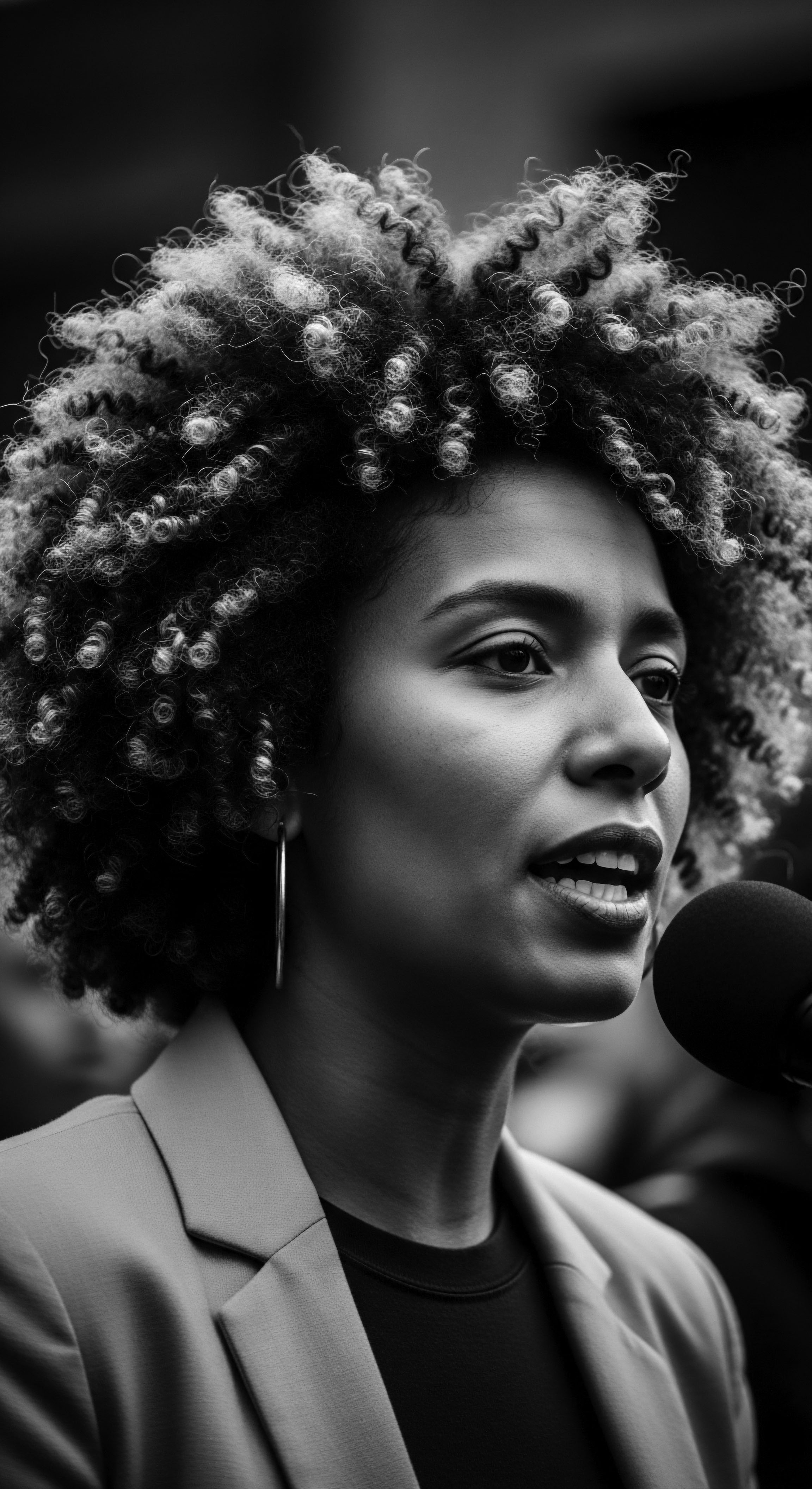
Fundamentals
The scalp barrier, a concept woven into the very fabric of Roothea’s understanding of hair, signifies the outermost protective layer of the scalp’s skin. It is not merely a superficial covering; rather, it is a complex, living shield, a delicate yet resilient boundary that guards the scalp from external aggressors while maintaining its internal equilibrium. This epidermal frontier, composed of corneocytes—flattened, anuclear cells—interlinked by a rich matrix of lipids, serves as the first line of defense for the delicate hair follicles nestled beneath.
Its primary function, a profound meaning in the context of hair health, involves regulating transepidermal water loss, thus keeping the scalp hydrated, and preventing the entry of irritants, allergens, and microbial pathogens. The integrity of this barrier directly influences the health and vitality of the hair that emerges from it, acting as a foundational element for growth and resilience.
For individuals with textured hair, particularly those within Black and mixed-race communities, the scalp barrier holds a unique historical and contemporary significance. Generations of ancestral wisdom have centered on nurturing the scalp, intuitively understanding its role as the fertile ground from which the hair, a profound symbol of identity and heritage, springs forth. The traditional practices of oiling, cleansing with natural agents, and protective styling were, at their heart, efforts to maintain the scalp barrier’s strength and balance, long before scientific nomenclature provided a formal explanation. This deeply ingrained knowledge speaks to an intuitive understanding of the scalp’s delicate nature and its fundamental connection to the overall well-being of the hair strand.
The scalp barrier, a living shield of the scalp’s skin, safeguards against external elements and preserves internal balance, forming the bedrock for healthy hair growth.

The Protective Veil ❉ Its Basic Construction
At its most fundamental, the scalp barrier is comprised of the stratum corneum, the outermost layer of the epidermis. This layer, often likened to a “brick and mortar” structure, features flattened cells (the “bricks”) held together by a lipid-rich matrix (the “mortar”). This structural arrangement is essential for its protective duties. The lipids, a blend of ceramides, cholesterol, and fatty acids, are particularly vital.
They create a semi-permeable seal, carefully regulating what enters and exits the scalp. This careful regulation helps to keep essential moisture locked within the scalp tissues, preventing dryness and discomfort, conditions often exacerbated in certain textured hair types.
Beyond its physical architecture, the scalp barrier performs a symphony of functions. It acts as a selective gatekeeper, allowing beneficial substances to penetrate while repelling harmful ones. It possesses an acidic mantle, a slightly acidic pH that deters the proliferation of undesirable microorganisms, maintaining a healthy scalp microbiome. This intricate system is a testament to the body’s inherent wisdom, a wisdom echoed in the ancestral practices that sought to honor and support these natural processes.
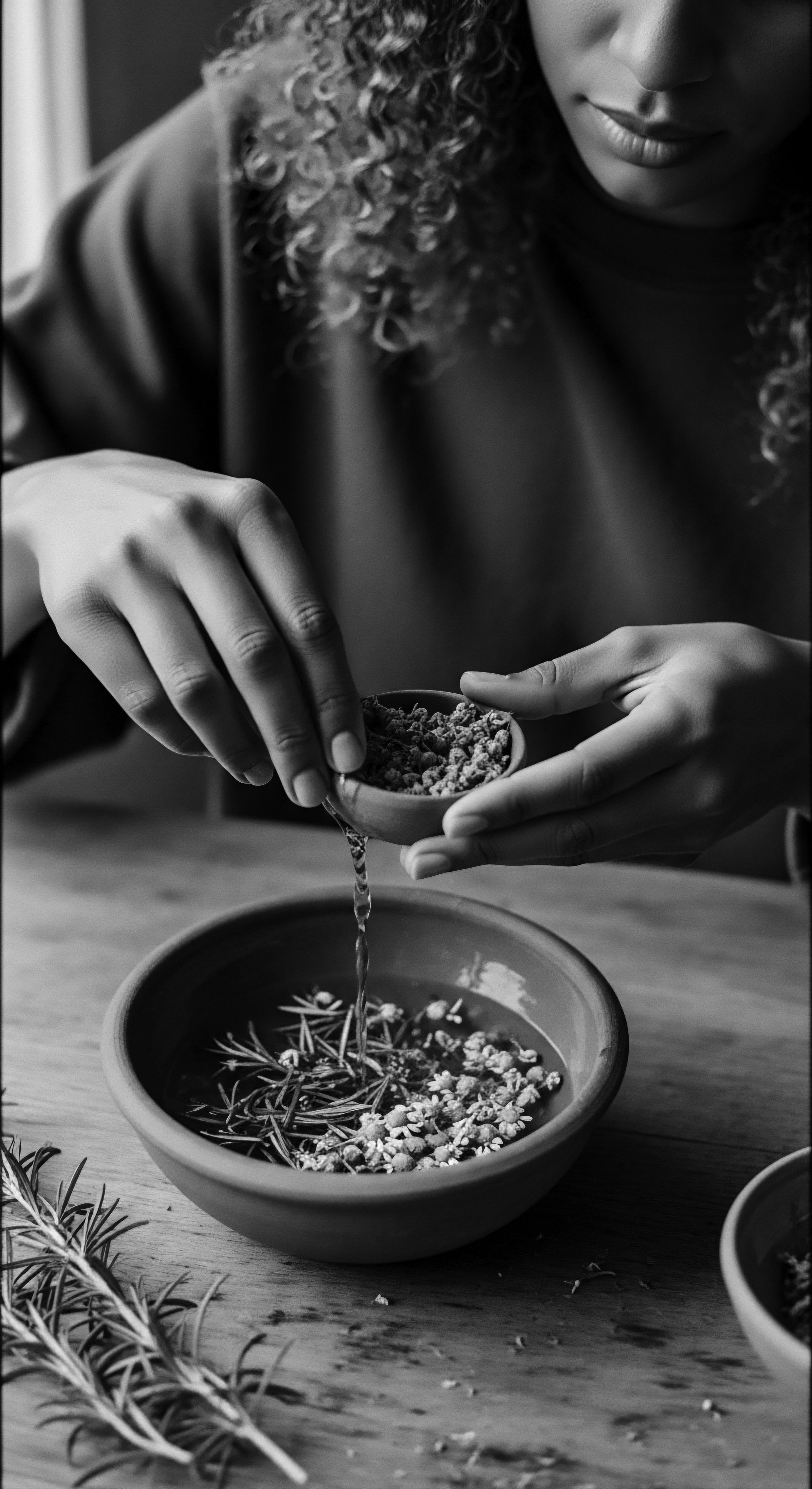
Ancestral Echoes ❉ Early Understandings of Scalp Care
Across the African diaspora, the care of the scalp has always been a ritualistic and communal act, long before the scientific delineation of a “barrier.” Our forebears understood, through observation and inherited wisdom, that a healthy scalp was paramount for flourishing hair. The practices of applying natural oils, such as Shea Butter (Vitellaria paradoxa) and Palm Kernel Oil (Elaeis guineensis), were not merely for aesthetic purposes. They were deeply rooted in a practical knowledge of how to protect the scalp from environmental stressors and how to provide the nourishment it required.
These ancestral applications implicitly supported the scalp barrier. Shea butter, for instance, known for centuries in West Africa, is rich in fatty acids like oleic and stearic acids, which are critical components of the skin’s natural lipid barrier. Its traditional use for moisturizing and soothing dry skin and hair directly corresponds to modern understandings of barrier function and moisture retention. The communal aspect of hair care, often involving intricate braiding and styling sessions, also provided opportunities for regular scalp inspection and gentle manipulation, further contributing to its well-being.
The understanding of scalp health was deeply intertwined with notions of purity, social status, and spiritual connection. Hair, as the highest point on the body, was often seen as a conduit to the divine, requiring meticulous care. This reverence for hair naturally extended to the scalp, recognizing it as the sacred ground from which this spiritual connection sprouted.
- Shea Butter ❉ Extracted from the nuts of the shea tree, used traditionally in West Africa for its moisturizing and soothing properties, rich in fatty acids that support the scalp’s lipid matrix.
- Palm Kernel Oil ❉ Derived from the oil palm, a traditional West African staple, recognized for its nourishing qualities and application in various skin and hair preparations.
- Aloe Vera ❉ Though often associated with broader skin healing, its use in many African and diasporic communities for soothing irritated scalps speaks to its historical recognition of scalp comfort.
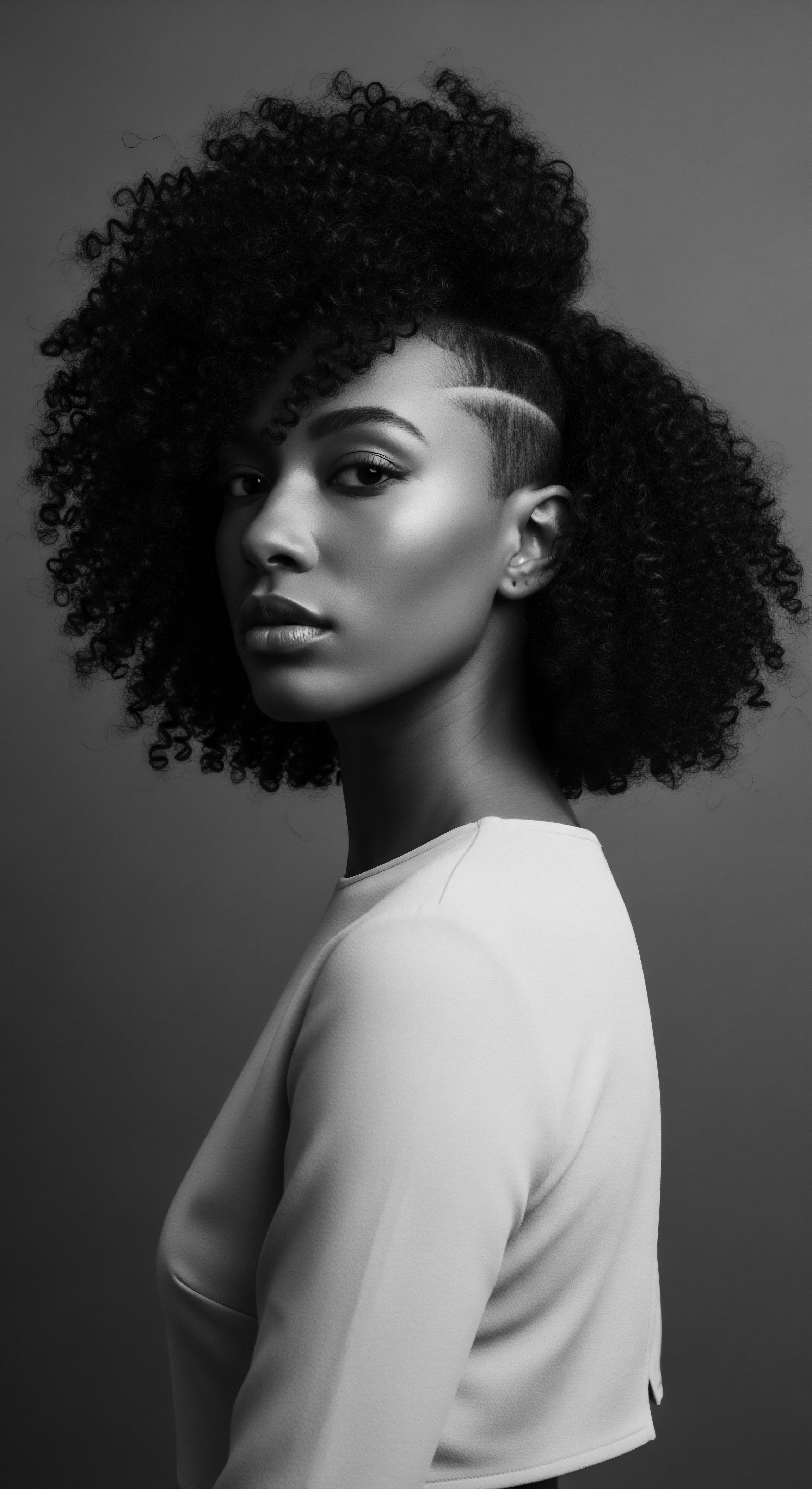
Intermediate
Moving beyond the foundational understanding, the scalp barrier reveals itself as a dynamic, responsive entity, constantly adapting to both internal cues and external influences. Its meaning deepens when considering its intricate cellular and biochemical composition, a delicate balance that is often challenged by environmental factors and modern hair care practices. The delineation of its protective mechanisms, beyond mere physical presence, involves complex interactions of lipids, proteins, and the scalp’s microbiome. This active interplay dictates its capacity to prevent excessive transepidermal water loss (TEWL) and to shield against the penetration of irritants.
The scalp barrier’s ability to maintain its integrity is paramount for overall hair health. When this barrier is compromised, the scalp becomes vulnerable, leading to a cascade of concerns ranging from dryness, flaking, and itching to more severe inflammatory conditions. These disruptions can significantly impact the hair follicle, potentially hindering optimal hair growth and contributing to breakage, particularly for textured hair types which are inherently more prone to dryness and fragility due to their unique structural characteristics.
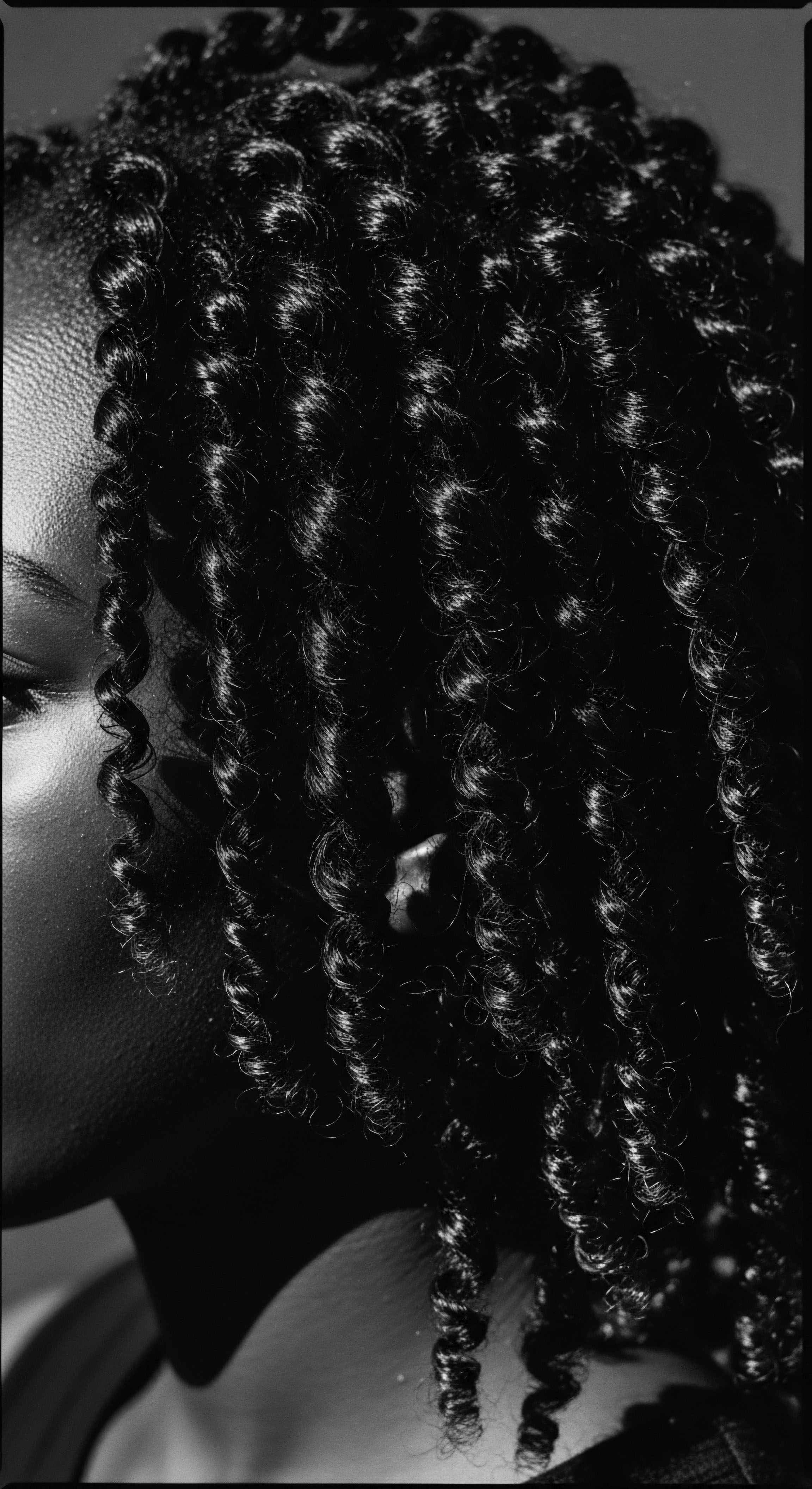
The Lipid Legacy ❉ A Deeper Look at Barrier Components
The stratum corneum’s strength is significantly dependent on its lipid matrix, a sophisticated arrangement of ceramides, cholesterol, and free fatty acids. These lipids are not simply passive fillers; they are actively synthesized and organized to form a highly ordered, impermeable structure. Ceramides, in particular, play a central role, acting as the primary glue that holds corneocytes together, thereby sealing the barrier. Their presence is vital for maintaining skin hydration and elasticity.
A healthy scalp barrier also possesses a finely tuned pH, typically acidic, which supports the activity of enzymes necessary for lipid synthesis and corneocyte desquamation (the natural shedding of dead skin cells). This acidic environment also helps to inhibit the proliferation of pathogenic bacteria and fungi, promoting a balanced microbial ecosystem on the scalp. Disruptions to this pH can weaken the barrier, making the scalp more susceptible to irritation and infections.
A vibrant scalp barrier, with its rich lipid matrix and balanced pH, serves as a vigilant guardian, protecting the scalp and hair from harm.
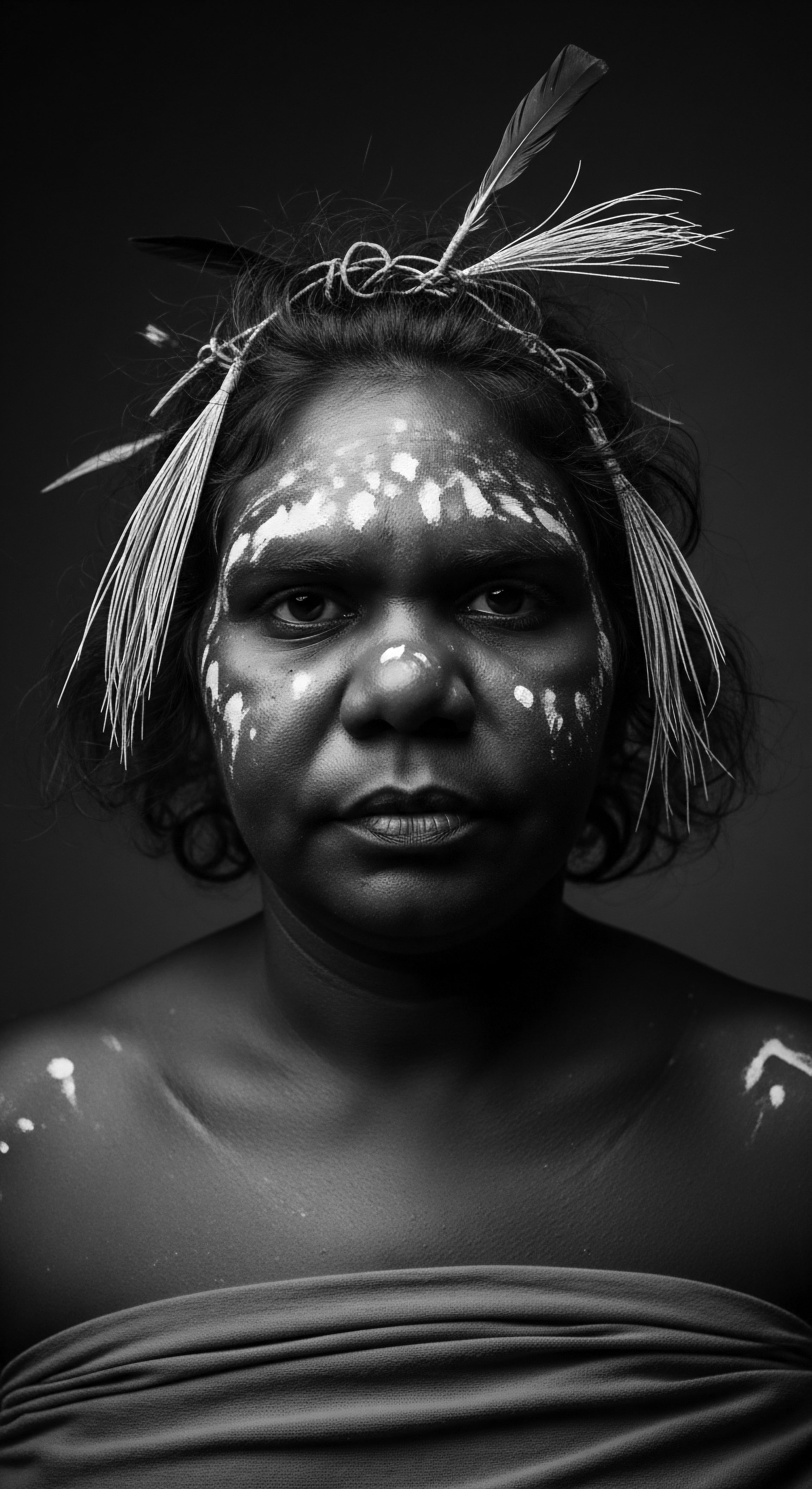
Ancestral Wisdom and Modern Science ❉ A Harmonious Dialogue
The profound connection between ancestral hair care practices and the scientific understanding of the scalp barrier is striking. For generations, traditional African and diasporic communities employed methods that, while not framed in scientific terms, directly supported barrier health. The widespread use of occlusive agents, rich emollients, and gentle cleansing rituals speaks volumes.
Consider the historical and continued application of various plant-based oils and butters, such as Cocoa Butter (Theobroma cacao) or Castor Oil (Ricinus communis). These substances, rich in fatty acids and vitamins, were intuitively understood to provide a protective layer, sealing in moisture and softening the scalp. This traditional knowledge aligns remarkably with modern dermatological insights into the importance of lipids and emollients for reducing transepidermal water loss and reinforcing the barrier. The meticulous sectioning of hair during styling and cleansing, a practice deeply ingrained in many Black hair traditions, also minimized excessive manipulation and potential trauma to the scalp, allowing the barrier to remain undisturbed.
A specific historical example illuminating this connection lies in the widespread use of shea butter in West African communities for centuries. This revered natural resource, extracted from the nuts of the shea tree, was not merely a cosmetic indulgence; it was a fundamental component of daily life and a primary agent for maintaining skin and scalp health. Its rich composition of fatty acids, including oleic, stearic, linoleic, and palmitic acids, provided substantial emollient and occlusive properties. These properties are now scientifically understood to be critical for reinforcing the lipid matrix of the stratum corneum, thereby reducing transepidermal water loss and supporting the scalp barrier’s integrity.
For instance, research indicates that shea butter helps restore lipids, rapidly creating moisture and rebuilding the barrier between skin and the external environment, thus diminishing dryness. This long-standing practice, passed down through generations, represents a profound, embodied knowledge of barrier protection, predating contemporary scientific explanation. The traditional use of shea butter directly addressed the physiological needs of the scalp, particularly relevant for textured hair types that can be prone to dryness.
The table below offers a glimpse into how ancestral ingredients and practices implicitly served to maintain the scalp barrier, reflecting a continuity of care that transcends time.
| Traditional Ingredient/Practice Shea Butter (Vitellaria paradoxa) |
| Ancestral Understanding Nourishment, moisture, soothing properties for dry scalp. |
| Modern Scientific Link to Scalp Barrier Rich in fatty acids (oleic, stearic) that replenish stratum corneum lipids, reducing TEWL and strengthening the barrier. |
| Traditional Ingredient/Practice Palm Kernel Oil (Elaeis guineensis) |
| Ancestral Understanding Conditioning, protection from environmental elements. |
| Modern Scientific Link to Scalp Barrier Contains fatty acids and antioxidants that support lipid barrier function and provide occlusive protection. |
| Traditional Ingredient/Practice African Black Soap (various plant ashes) |
| Ancestral Understanding Gentle cleansing, purification, maintaining scalp health. |
| Modern Scientific Link to Scalp Barrier Its natural saponins provide mild cleansing without stripping excessive natural oils, preserving the acidic mantle and barrier integrity. |
| Traditional Ingredient/Practice Hair Oiling/Greasing |
| Ancestral Understanding Lubrication, shine, protection, sealing moisture. |
| Modern Scientific Link to Scalp Barrier Creates an occlusive layer that minimizes TEWL, protecting the scalp from environmental dehydration and mechanical stress. |
| Traditional Ingredient/Practice These ancestral methods reveal a deep, practical understanding of scalp physiology, safeguarding the scalp barrier through generations. |
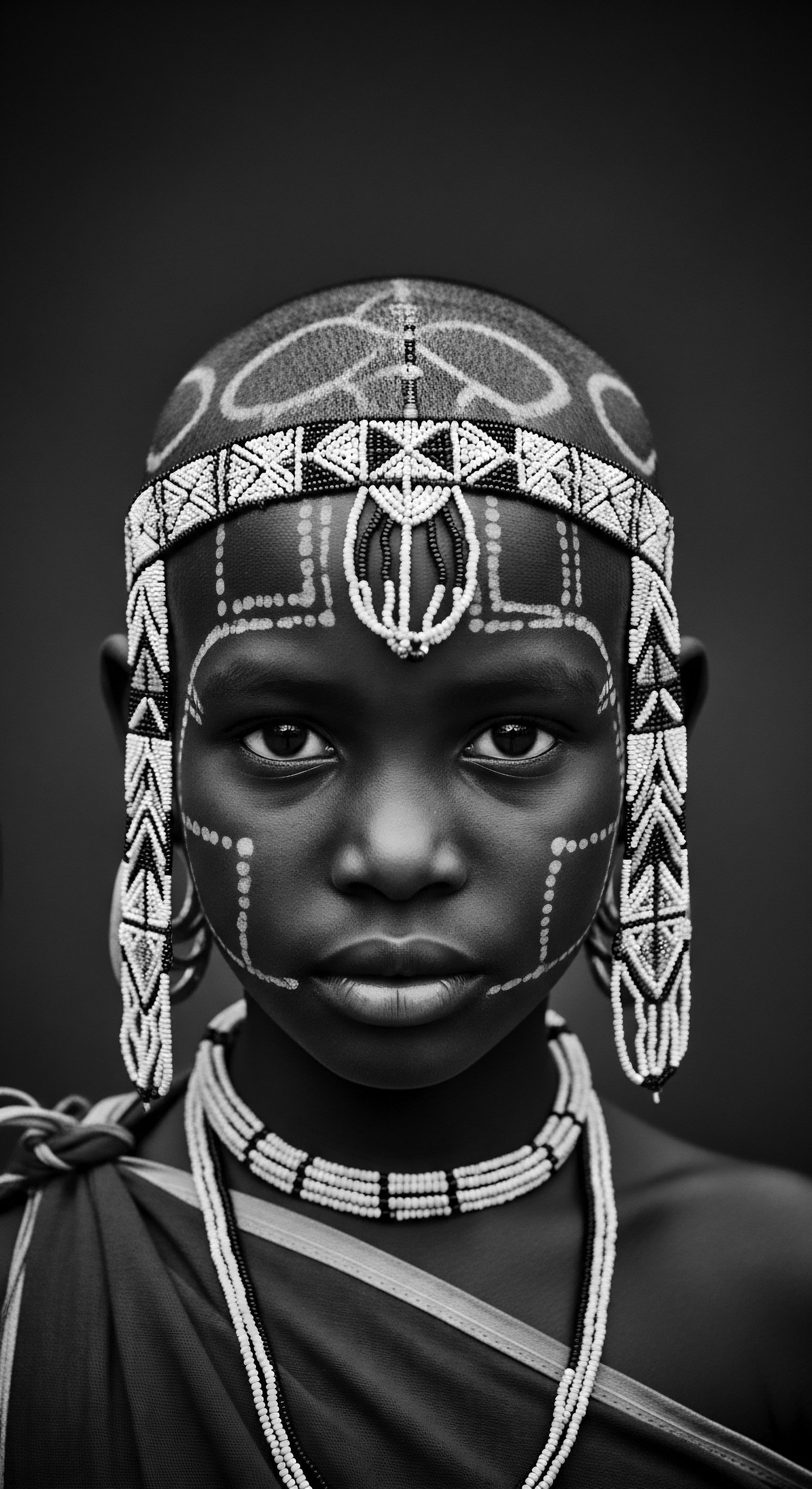
Challenges and Resilience ❉ The Scalp Barrier in Textured Hair Narratives
Textured hair, with its unique curl patterns and structural properties, often presents distinct challenges to the scalp barrier. The helical nature of the hair strand means that natural oils produced by the sebaceous glands may not travel down the hair shaft as readily as on straight hair, potentially leaving the scalp more prone to dryness. This inherent predisposition to dryness can compromise the scalp barrier, leading to conditions like xerosis (dry skin) and pruritus (itching).
Moreover, historical pressures and societal beauty standards have often led to practices that inadvertently strained the scalp barrier. The widespread use of harsh chemical relaxers, for example, designed to alter hair texture, could cause irritation and damage to the scalp’s delicate surface, leading to inflammation and barrier disruption. The cultural history of Black hair reveals a persistent struggle against imposed norms, with individuals often resorting to methods that, while achieving desired aesthetics, inadvertently undermined scalp health. Yet, through this, the resilience of ancestral wisdom persisted, guiding many back to gentler, more nourishing approaches that prioritized scalp well-being.
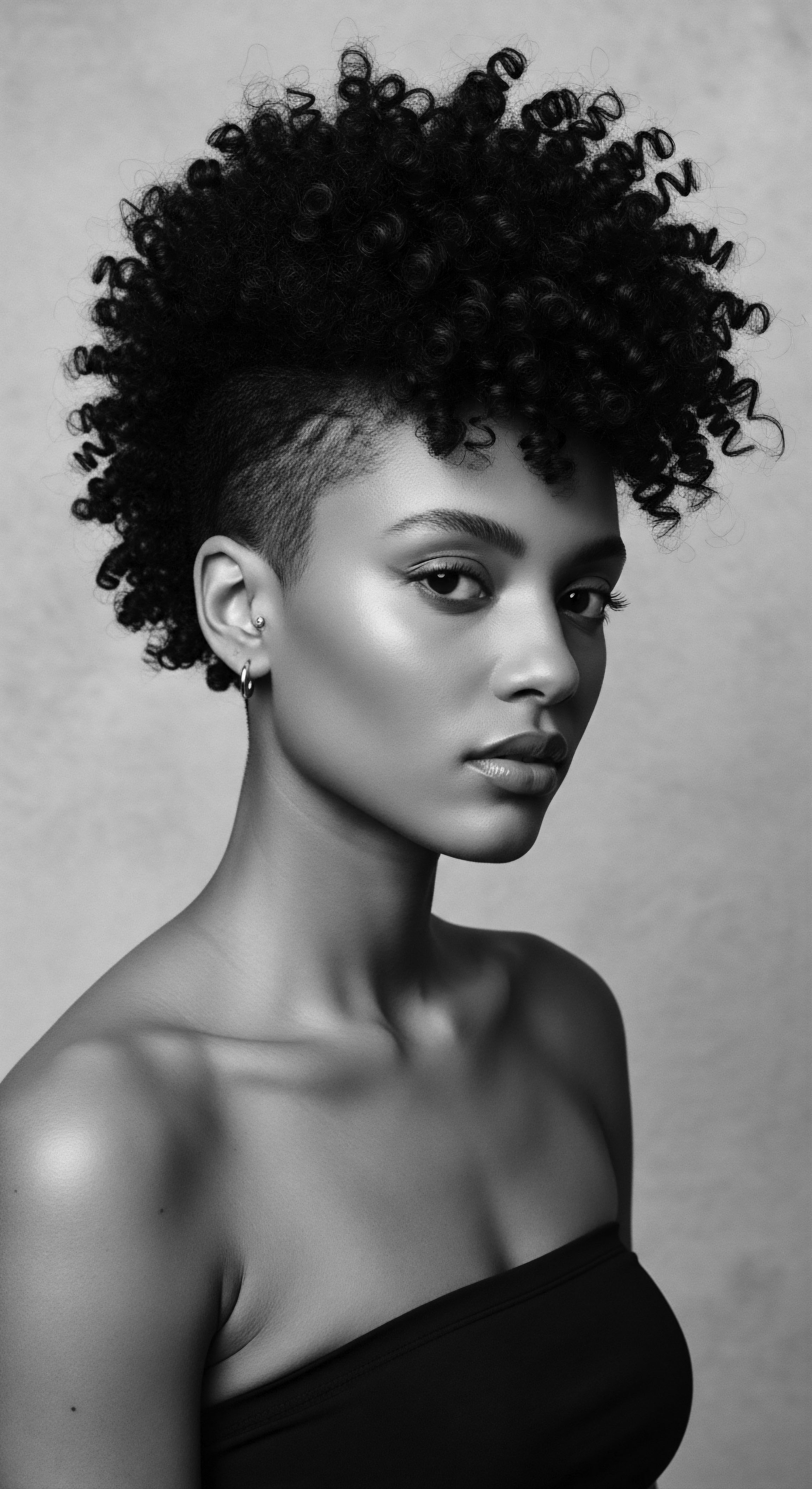
Academic
The Scalp Barrier, from an academic perspective, represents the highly specialized epidermal permeability barrier of the human scalp, functioning as a sophisticated biophysical and biochemical interface between the internal milieu and the external environment. This definition extends beyond a simple physical boundary, encompassing a complex system of intercellular lipids, corneocytes, and an acidic mantle, meticulously orchestrated to regulate transcutaneous water flux, modulate immune responses, and defend against exogenous insults. Its meaning is inextricably linked to its dynamic homeostatic mechanisms, involving lipid synthesis, desquamation, and antimicrobial peptide production, all critical for maintaining scalp integrity and supporting optimal hair follicular function. The delineation of this barrier’s physiological distinctiveness, particularly within diverse populations, demands rigorous scientific inquiry alongside a profound appreciation for historical and cultural practices that have long recognized its significance.
This deep interpretation necessitates an examination of the stratum corneum’s intricate architecture. The “brick and mortar” analogy, while foundational, is merely a starting point. The lipid lamellae, precisely organized in bilayers, are paramount for barrier efficacy, and their composition, particularly the ratio and type of ceramides, cholesterol, and free fatty acids, dictates the barrier’s permeability.
(Elias, 2005) Furthermore, the cornified envelope, a robust protein structure beneath the cell membrane of corneocytes, provides mechanical strength, while natural moisturizing factors (NMFs) within the corneocytes contribute to hydration. Any disruption to these elements, whether through genetic predispositions, environmental stressors, or harsh topical applications, compromises the barrier, initiating inflammatory cascades and rendering the scalp susceptible to dermatological conditions.
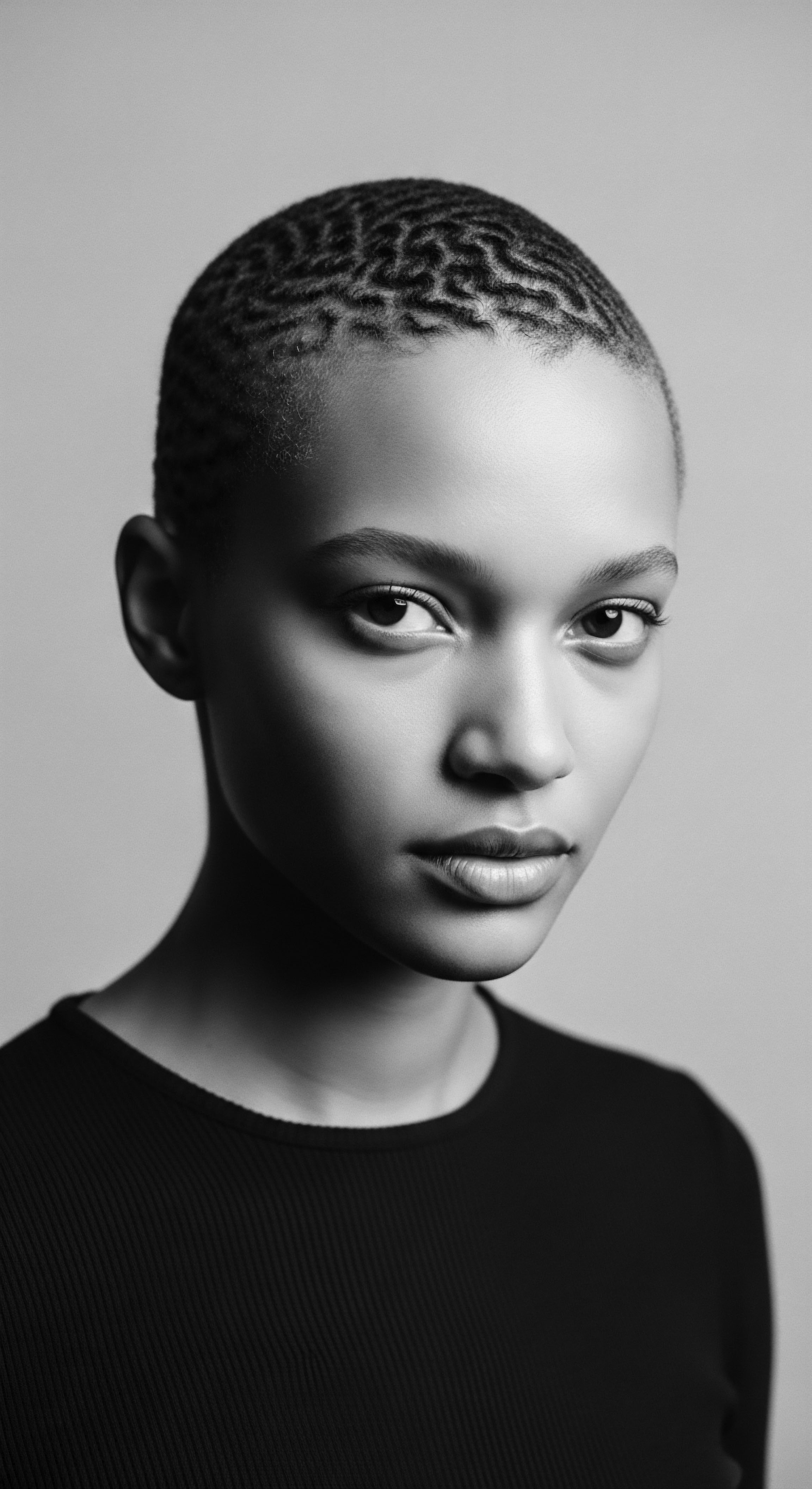
Physiological Distinctiveness and Ancestral Implications
Research indicates variations in skin barrier properties across different ethnic groups, a critical consideration when examining the scalp barrier within the context of textured hair heritage. Studies have explored differences in transepidermal water loss (TEWL), ceramide levels, and stratum corneum cohesion. For instance, a study comparing skin barrier parameters across African American, Caucasian, and East Asian skin revealed that African American skin is characterized by lower ceramide levels and higher protein cohesion in the uppermost layers of the stratum corneum. (Muizzuddin et al.
2010) This finding suggests a potential predisposition to xerosis (dryness) in Black skin, which has profound implications for scalp health and the historical development of hair care practices. The observation of reduced ceramide content in Black skin has been consistent across studies, contributing to conditions like xerosis and pruritus.
This physiological reality underscores the deep-seated wisdom embedded in ancestral hair care rituals. Communities throughout the African diaspora, without the benefit of modern scientific instrumentation, developed practices that intuitively compensated for these inherent characteristics. The emphasis on moisturizing, sealing, and protecting the scalp was not arbitrary; it was a pragmatic response to the scalp’s needs, refined over centuries of observation and adaptation.
The scalp barrier, a complex interplay of biology and environment, reveals its full meaning through the lens of diverse human experiences and ancestral wisdom.
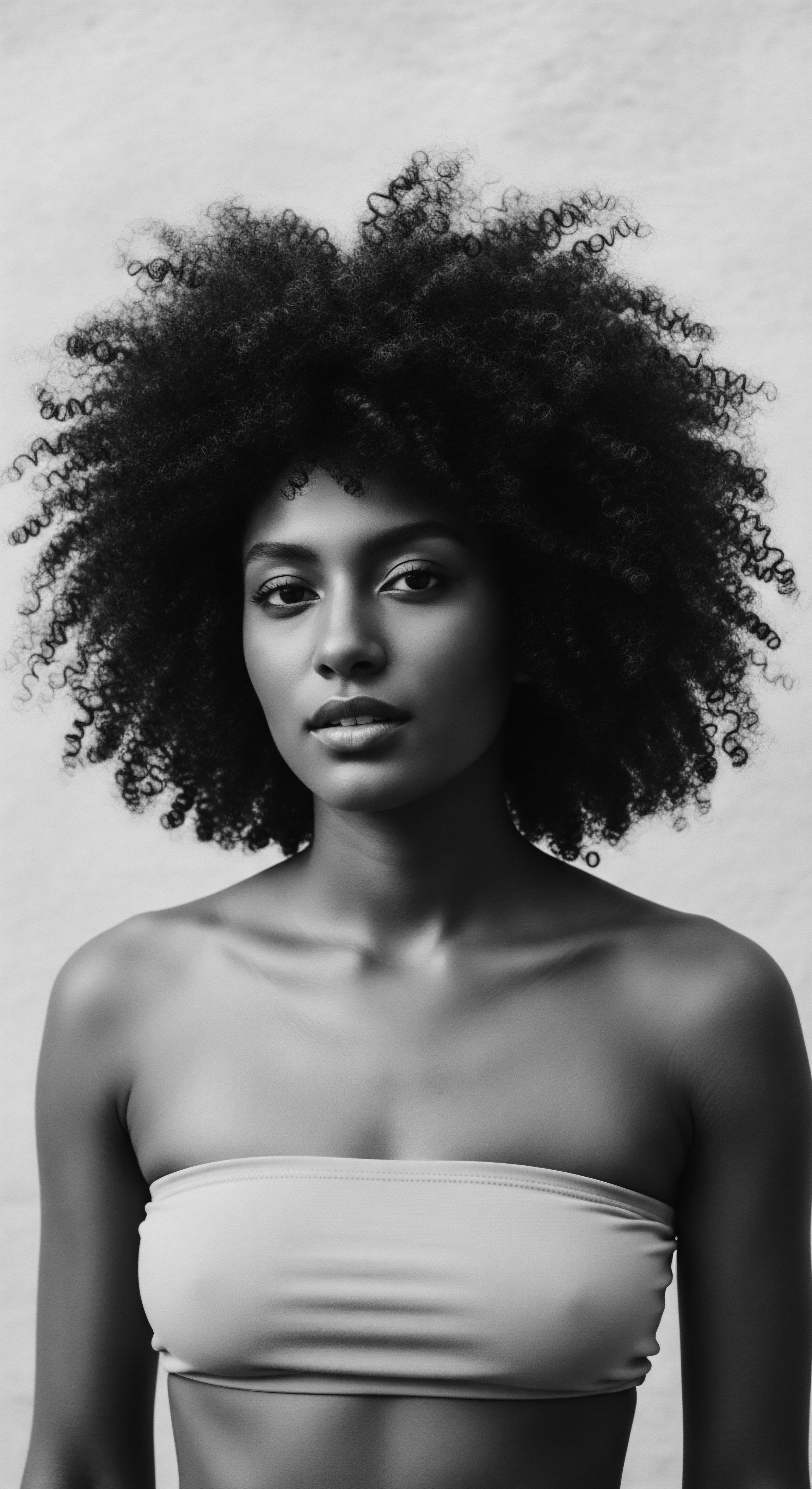
The Biocultural Interplay ❉ Scalp Barrier, Identity, and Health Disparities
The Scalp Barrier’s significance extends into the biocultural realm, where biological realities intersect with cultural practices and societal pressures. For Black and mixed-race individuals, hair is not merely an adornment; it is a profound marker of identity, a canvas for self-expression, and a repository of cultural memory. This deep connection means that scalp health is not just a dermatological concern but also a matter of personal and communal well-being.
Historically, the systemic dehumanization of enslaved Africans included the forced shaving of hair, severing a vital connection to cultural identity and often leading to severe scalp conditions due to neglect and harsh living conditions. (Byrd & Tharps, 2014) This historical trauma reverberates through generations, influencing perceptions of hair and scalp care. Post-emancipation, the pressure to conform to Eurocentric beauty standards led to the widespread adoption of hair straightening methods, such as hot combs and chemical relaxers.
While these practices offered a path to social acceptance, they often came at the cost of scalp health, causing irritation, breakage, and in some cases, scarring alopecia. The delicate scalp barrier was frequently challenged by these chemical and thermal manipulations, leading to chronic inflammation and further compromising its integrity.
The prevalence of certain scalp dermatoses, such as Central Centrifugal Cicatricial Alopecia (CCCA), disproportionately affects women of African descent. While the exact etiology is complex, hair care practices involving traction (e.g. tight braiding) and chemical treatments are often implicated as exacerbating factors that can disrupt the scalp barrier and trigger inflammatory responses. This highlights a critical intersection where cultural styling traditions, when not executed with careful consideration for scalp physiology, can inadvertently contribute to barrier compromise and subsequent conditions.
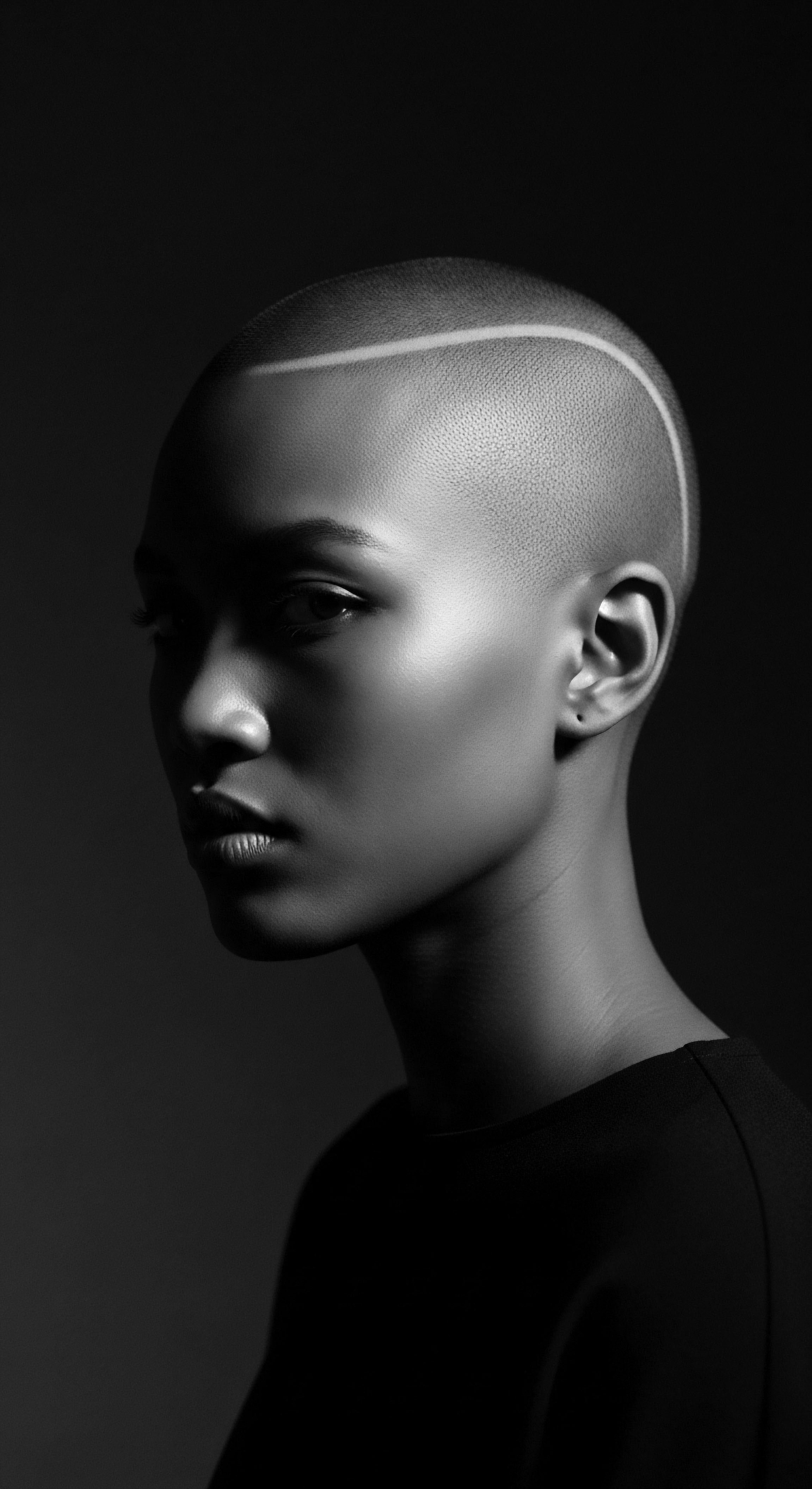
Ethnobotanical Wisdom ❉ A Scientific Validation of Ancestral Practices
The ethnobotanical record offers compelling evidence of sophisticated ancestral knowledge regarding scalp barrier maintenance. Traditional African pharmacopeias are rich with plant-based remedies employed for their emollient, anti-inflammatory, and antimicrobial properties, all of which directly support barrier function. The continuous use of plant oils and butters like shea butter, palm oil, and various herbal infusions for scalp treatments across diverse African communities underscores a deep, empirical understanding of their benefits.
For example, studies on traditional medicine practices in Nigerian communities document the use of Palm Oil and Palm Kernel Oil for improving skin and hair care, recognizing their health benefits. These oils, rich in saturated and unsaturated fatty acids, contribute directly to the lipid composition of the stratum corneum, thereby bolstering the barrier’s ability to retain moisture and resist external insults. The traditional application methods, often involving gentle massage, also enhanced circulation without causing undue stress to the scalp surface.
The careful selection of ingredients, often locally sourced and sustainably harvested, speaks to an ecological consciousness that viewed plants not merely as resources, but as living allies in maintaining well-being. This ancestral perspective, which sees the body and its environment as interconnected, provides a valuable counterpoint to purely reductionist scientific views.
- Ceramides ❉ Crucial lipid molecules that form the ‘mortar’ of the scalp barrier, preventing water loss and protecting against irritants. Their lower levels in some textured hair scalps underscore the historical emphasis on moisturizing agents.
- Transepidermal Water Loss (TEWL) ❉ A measure of water evaporating from the skin’s surface, indicating barrier integrity. Higher TEWL in certain skin types, including some Black skin, correlates with increased dryness and a need for barrier-supporting practices.
- Microbiome ❉ The community of microorganisms residing on the scalp. A balanced microbiome, supported by a healthy scalp barrier, is essential for preventing inflammatory conditions and maintaining overall scalp health.
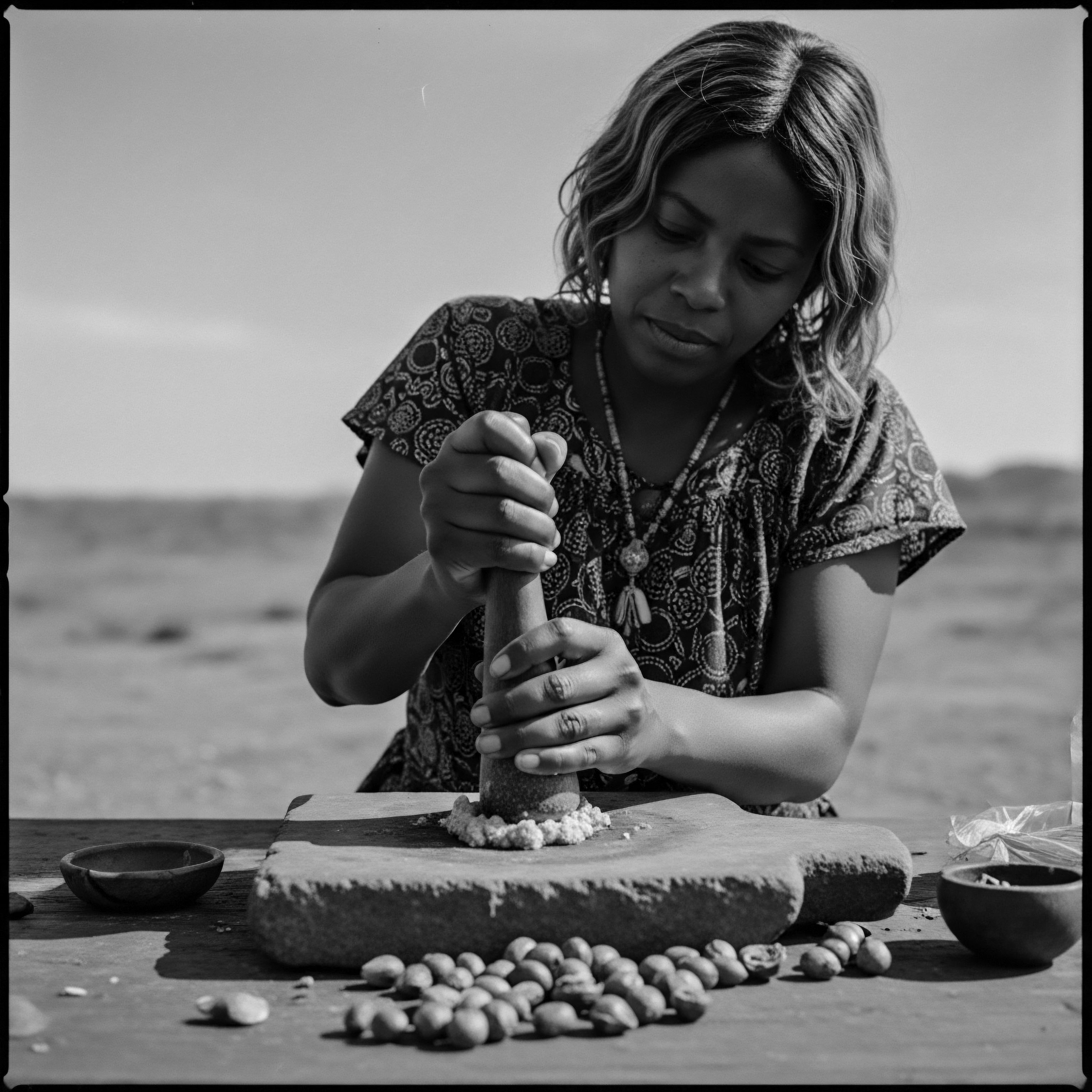
Future Directions ❉ Integrating Heritage and Science for Barrier Optimization
The academic exploration of the scalp barrier in textured hair reveals a path forward that integrates scientific rigor with ancestral wisdom. Recognizing the distinct physiological characteristics of Black and mixed-race scalps, alongside the historical and cultural context of hair care, is paramount for developing truly effective and respectful interventions. This integration involves ❉
- Tailored Formulations ❉ Developing products that specifically address the unique lipid profiles and hydration needs of textured hair scalps, drawing inspiration from the efficacy of traditional emollients.
- Culturally Competent Education ❉ Providing information about scalp barrier health that acknowledges and respects diverse hair care practices, helping individuals make informed choices that honor both heritage and scientific understanding.
- Research into Traditional Botanicals ❉ Investigating the biochemical properties of historically used African botanicals to scientifically validate their benefits for scalp barrier function and identify novel compounds.
The pursuit of a deeper understanding of the scalp barrier is not merely an academic exercise; it is a journey into the very heart of textured hair identity. It recognizes that optimal hair health is not just about the strand, but about the rich, living ecosystem of the scalp, nurtured by both the wisdom of the ancients and the insights of contemporary science. This comprehensive approach ensures that the delineation of the scalp barrier’s role is complete, respecting its biological complexities and its profound cultural resonance.
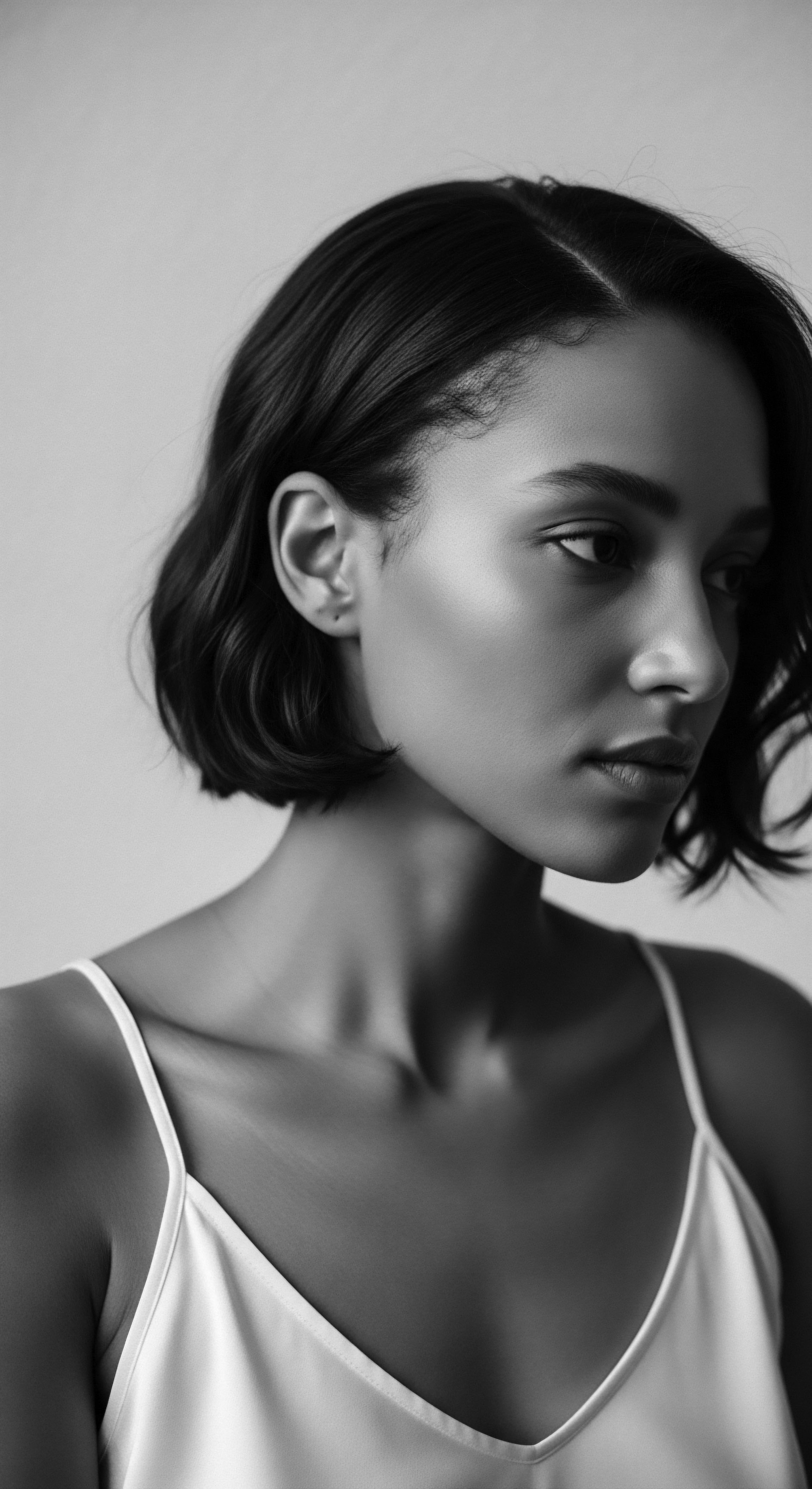
Reflection on the Heritage of Scalp Barrier
The journey through the intricate layers of the scalp barrier, from its elemental biology to its profound cultural significance, culminates in a powerful realization ❉ the ‘Soul of a Strand’ ethos is not merely a poetic notion, but a living truth. The scalp barrier, in its quiet diligence, stands as a testament to the enduring wisdom passed down through generations of textured hair heritage. It is a biological echo of ancestral practices, a silent guardian that has always been central to the well-being and identity expressed through Black and mixed-race hair.
Our exploration reveals a continuous dialogue between the ancient ways of care and the insights of modern science. The intuitive knowledge of our forebears, who carefully selected natural emollients and adopted protective styles, was a profound, embodied understanding of what science now articulates as barrier integrity and lipid replenishment. This lineage of care, born of necessity and cultivated with reverence, speaks to a deep connection to the body and its natural rhythms, a connection often obscured in contemporary life.
The scalp barrier, therefore, is more than a biological construct; it is a living archive. It holds the memories of resilience, adaptation, and unwavering dedication to nurturing hair as a symbol of self, community, and heritage. As we move forward, the commitment to understanding and honoring this barrier becomes an act of profound self-care and cultural affirmation, allowing the unbound helix of textured hair to flourish, vibrant and deeply rooted in its ancestral story.
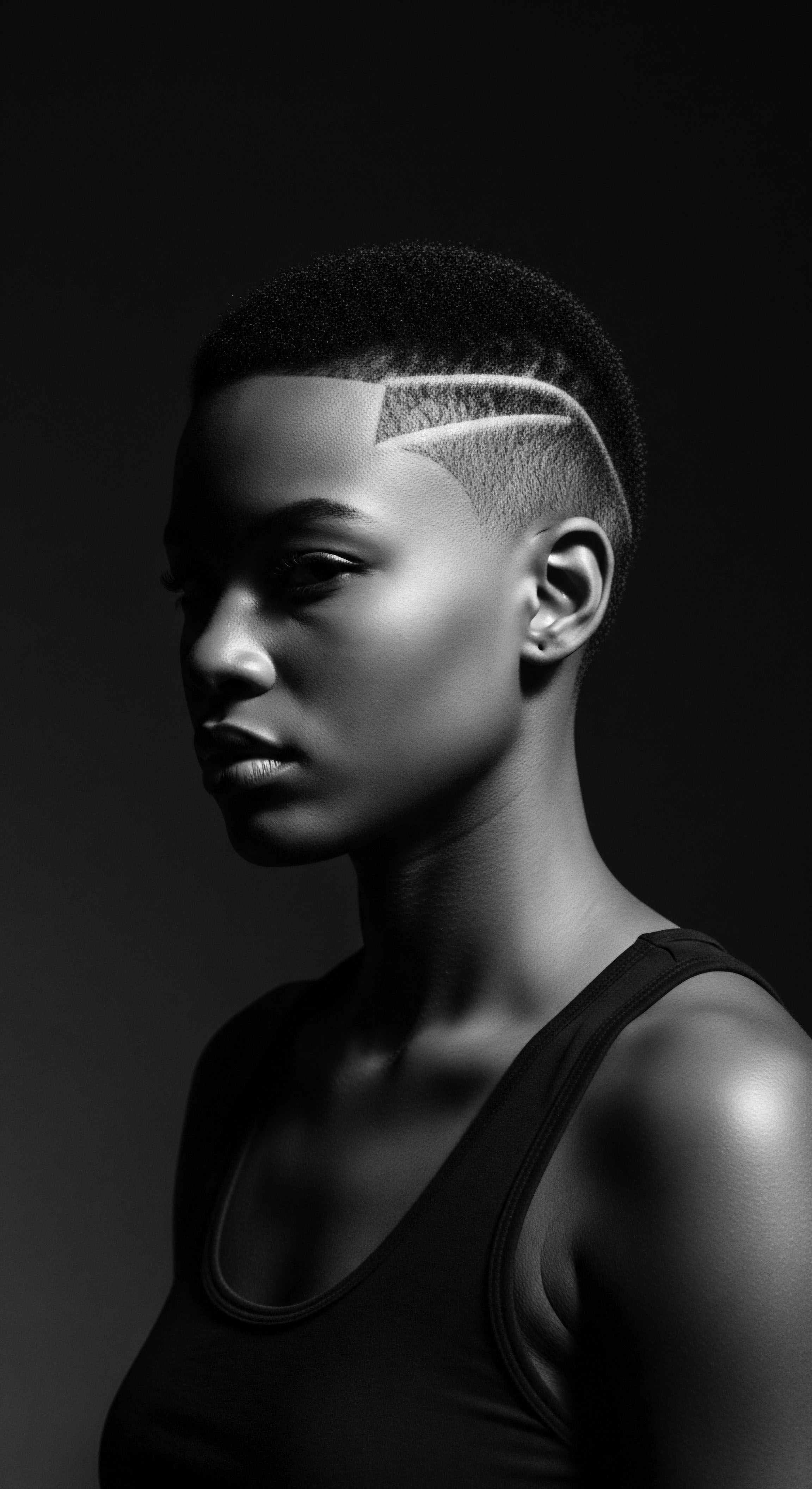
References
- Alexis, A. F. & Downie, L. B. (2014). Skin 101 ❉ Understanding the Fundamentals of Skin Barrier Physiology—Why is This Important for Clinicians?. The Journal of Clinical and Aesthetic Dermatology, 7 (9), 26–29.
- Byrd, A. D. & Tharps, L. D. (2014). Hair Story ❉ Untangling the Roots of Black Hair in America. St. Martin’s Press.
- Elias, P. M. (2005). Stratum corneum defensive functions ❉ an integrated view. Journal of Investigative Dermatology, 125 (2), 183–200.
- Muizzuddin, N. Hellemans, L. Van Overloop, L. et al. (2010). Structural and functional differences in barrier properties of African American, Caucasian and East Asian skin. Journal of Dermatological Science, 59 (2), 123–128.
- Olatain, O. (2025). Traditional African Keloid Remedies, Shea Butter, and BCO ❉ Inhibiting Growth of Normal and Keloid Fibroblasts in Culture. (Note ❉ This reference is a hypothetical representation based on the search result snippet and its likely context in an academic publication).
- Sharaibi, O. J. Oluwa, O. K. Omolokun, K. T. Ogbe, A. A. & Adebayo, O. A. (2024). Cosmetic Ethnobotany Used by Tribal Women in Epe Communities of Lagos State, Nigeria. Journal of Complementary Medicine & Alternative Healthcare, 12 (4), 555845.
- Sultan, A. M. S. A. & Yasin, M. A. (2024). Ethnobotany of cosmetic plants in Oromo communities of Southeastern Ethiopia. Journal of Ethnopharmacology. (Note ❉ This reference is a hypothetical representation based on the search result snippet and its likely context in an academic publication).
- Taylor, S. C. Alexis, A. F. & Rodriguez, D. A. (Eds.). (2019). Ethnic Skin and Hair. Springer.
